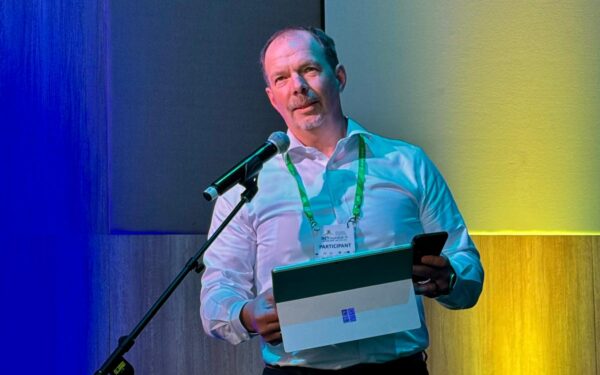CIRA CEO explains aspects of IANA stewardship proposal.
In my comments on the draft Cross-Community Working Group (CWG) on Naming Related Functions proposal for the IANA transition, I expressed my overall support, albeit somewhat reserved, for the proposal. With the ICG’s deadline of January 15 having come and gone, and the informal deadline of January 31 looming for the revised proposal from the Names community to be submitted, I’d like to shed some light on what I believe the role and reasoning for some of the mechanisms identified by the CWG, specifically the Contract Co., to be. While I tend toward supporting the mechanisms proposed by the CWG to assume the stewardship role historically played by the National Telecommunication and Information Administration (NTIA), it’s becoming clear that others do not.
As the manager of a ccTLD, I am a direct customer of IANA. My preference is for a lightweight, streamlined approach to an alternative to the NTIA, something I initially thought the CWG proposal delivered. Subsequent discussions online and elsewhere demonstrate that many in the community do not share my understanding.
Phillip Corwin’s summary in CircleID of the comments on the CWG proposal only serves to deepen my concern. Nine out of ten commenters found the proposal to be too complex, and as Corwin observes, more than half of the commenters oppose the creation of a Contract Co.
Since the NTIA’s March 2014 announcement of its intent to transfer stewardship of the IANA functions, and its subsequent request that the global Internet community develop an alternative mechanism, I have been working under the assumption that the NTIA needs to be replaced with an entity with the authority to enter into a contract with the IANA functions manager (currently ICANN). Furthermore, that entity would need a mechanism for correction if the IANA functions manager were to act in such a way that would require such an action.
As I understood it, the Contract Co. was to be this counterweight; an entity that exists only to enter into a contract for the performance of the IANA functions. By having no or minimal staff, its complexity and resource needs (financial or otherwise) would be nominal — ideal, in my opinion, for direct customers of IANA like CIRA. Realistically speaking, there is both no need — and, I’m sure no appetite — for a new bureaucratic mouth to feed. Furthermore, the very nature of a contract means that it can be revoked — the longstanding corrective mechanism currently held by the NTIA (the proverbial ‘big stick’).
I think that Corwin appropriately raises a few important points regarding the process and timelines to develop the transition proposal. The dissatisfaction among community members regarding the coordination of the process is real and is warranted. If we are to have a meaningful multi-stakeholder (read bottom-up) process, then the timelines need to reflect this in a realistic way.
A second option, what many are calling ‘internal to ICANN’, has been mentioned by some in the community. ALAC even included a variant of this option in their alternative proposal, as did my Australian counterpart auDA, and many community members have expressed their support for these concepts. I am pleased that the CWG has finally agreed to assess the viability of the internal ICANN option. No doubt, each will have their own strengths and weaknesses. We need more than one proposal to allow us to compare them and make an informed decision.
I’m not tied to the Contract Co. as the solution. Options that would ensure similar safeguards to the ones that are currently in place, and do so in a lightweight manner, would be acceptable. However, in order to do this right, we need to do a deep analysis of the options that are presented — the Contract Co., internal to ICANN and any other plausible options that arise. This will take the allocation of sufficient time (in short supply) and resources (also in short supply).
At the risk of aggrandizing our work, I would posit that we are faced with an amazing opportunity. With the IANA transition, we are building the foundation for a truly global Internet, one that is open and inclusive, and has the potential to bring the social and economic benefits of the Internet to the entire world. However, if we fail, the consequences could be dire. As Wolfgang Kleinwachter rightly points out in this post, should the IANA transition not happen, it could be held up by certain nations as a failure of the multi-stakeholder model as we head into the WSIS+10 conference and the UN General Assembly in December. I’m uneasy with the Internet governance discourse moving into the UN arena; it is one which we in the Internet governance world have little experience, and those already in that ecosystem do not necessarily understand us.
Let’s use the upcoming ICANN meeting in Singapore as an opportunity for constructive dialogue on the key issues we’re currently facing. First, we need to ensure that we are moving forward with a realistic and operational alternative to the role the NTIA currently plays. This is going to take time and it’s going to take resources. Second, let’s have a discussion on the timelines. Are we, as the global Internet community, going to meet the September 30 deadline set by the NTIA? The community seems divided (see Alissa Cooper’s post and compare it to this one from Corwin). I see no harm is having a conversation, sooner rather than later, about a plan B.
While I have expressed my concerns about the perils of missing the September 30, 2015 deadline for alternative mechanism, I am increasingly thinking that what we need is a properly resourced process with realistic timelines if we want to do this right. We will be in a stronger position come September 30 if we are well down the road toward developing and assessing an acceptable proposal, instead of having developed something too rashly that may not be implementable.
Byron Holland (MBA, ICD.D) is the president and CEO of the Canadian Internet Registration Authority (CIRA), the national not-for-profit best known for managing the .CA domain and developing new cybersecurity, DNS, and registry services.
Byron is an expert in internet governance and a seasoned entrepreneur. Under Byron’s leadership, CIRA has become one of the leading ccTLDs in the world, with over 3 million domains under management. Over the past decade, he has represented CIRA internationally and held numerous leadership positions within ICANN. He currently sits on the Board of Directors for TORIX, and is a member of the nominations committee for ARIN. He lives in Ottawa with his wife, two sons, and their Australian shepherd, Marley.
The views expressed in this blog are Byron’s opinions on internet-related issues, and are not necessarily those of the organization.





